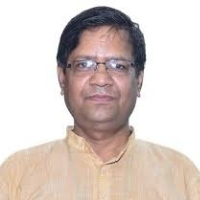Mahendra Verma
Indian Institute of Technology Kanpur
Seminar Information
Hybrid: In Person & Zoom (connection in link below)
Engineering Building Unit 2 (EBU2)
Room 479
Seminar Recording Available: Please contact seminar coordinator, Jake Blair at (j1blair@ucsd.edu)

Fourier analysis of turbulent convection shows that large-scale plumes (not small-scale ones) drive the flow. This feature indicates that the kinetic energy flux increases marginally with wavenumbers, leading to Kolmogorov-like k^{-5/3} scaling (not Bolgiano-Obukhov scaling) for turbulent convection. Another surprise is that the viscous dissipation in turbulent convection is suppressed as (U^3/L)Ra^{-0.2}, where Ra is the Rayleigh number. This suppression is due to the walls and buoyancy. Recent simulations up to Rayleigh number of 10^{18} shows that Nussult number follows classical ⅓ scaling, thus indicating absence of “ultimate regime”.
Reference: M. K. Verma, Physics of Buoyant Flows: From Instabilities to Turbulence, World Scientific, Singapore (2018).
Prof. Mahendra Kumar Verma joined the Department in 1994. He obtained his doctoral degree at the University of Maryland, working under the joint supervision of Profs. Melvyn Goldstein and Aaron Roberts. He is a Nonlinear Dynamist whose chief interest lies in theoretical studies of Turbulence and Non-Linear Physics. Currently, he is working on the Statistical Theory of Magnetohydrodynamic Turbulence and Dynamo. Dr. Verma is also interested in Atmospheric and Computational Physics. Apart from core courses, he has offered electives like Physics of Turbulence and Atmospheric Physics. He is also interested in primary school education.
